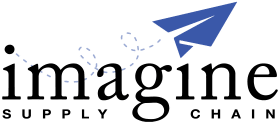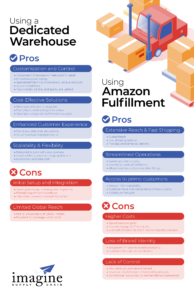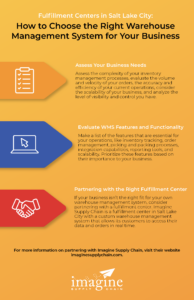Imagine Supply Chain manages seasonal demand and optimizes inventory during one of the most vibrant times of the year – Easter. As supply chain experts, we understand the challenges that come with sudden surges in demand, and we’re here to share insights on how to navigate these peaks effectively for fulfillment center.
Understanding Easter Demand Trends
Firstly, let’s take a closer look at Easter demand trends. Easter is a time of celebration, marked by traditions such as egg hunts, family gatherings, and festive meals. These activities create demand for a many products, including chocolates, candies, decorations, and apparel. As Easter approaches, we typically witness a significant rise in consumer spending across these categories. Axios says, “ Overall Easter spending is $22.4 billion.”
Challenges Faced by Fulfillment Centers
During Easter and other peak seasons, fulfillment centers play a huge role in making sure that customer orders are processed, picked, packed, and delivered efficiently. However, managing heightened demand can pose several challenges for fulfillment operations. Some of these challenges include:
- Capacity Constraints: Fulfillment centers may face constraints in terms of storage space, equipment, and manpower during peak seasons. This can lead to bottlenecks and delays in order processing.
- Inventory Management: Balancing inventory levels is a huge thing needed to meet demand without overstocking or running out of key products. Running out of products slows down the process. Effective inventory planning and replenishment strategies are essential for optimizing inventory levels.
- Order Fulfillment Speed: Customers expect fast and accurate order fulfillment, especially during busy periods like Easter. Fulfillment center need to streamline their processes to minimize order processing times and meet delivery deadlines.
Strategies for Managing Seasonal Demand Peaks
At Imagine Supply Chain, we believe in using strategies to manage seasonal demand peaks effectively. Here are some key strategies that we recommend:
- Data-Driven Demand Forecasting: Using data analytics and historical sales data, we can forecast demand more accurately. This helps us plan out the demand spikes and adjust inventory levels accordingly.
- Flexible Capacity Planning: To address capacity constraints, we adopt a flexible approach to capacity planning.
- Just-in-Time Inventory: Implementing a just-in-time (JIT) inventory strategy allows us to minimize excess inventory while ensuring that we have enough stock to fulfill orders. This lean inventory approach helps reduce carrying costs and improves inventory turnover rates.
- Collaborative Partnerships: Building strong partnerships with suppliers, carriers, and logistics providers is crucial during peak seasons. Collaborative planning and coordination help streamline the supply chain and enhance responsiveness to changing demand patterns.
Optimizing Inventory Management
Inventory management is central to successfully working around seasonal demand peaks. By implementing the following inventory optimization strategies, we can achieve greater efficiency and cost savings:
- ABC Analysis: Conducting an ABC analysis helps categorize inventory based on value and importance. This enables us to prioritize inventory replenishment efforts and focus on high-demand items.
- Safety Stock Planning: Maintaining stock levels for critical items minimizes the risk of stockouts and ensures continuity of supply. Calculating safety stock levels based on demand variability and lead times is essential for effective inventory management.
- Supplier Collaboration: Collaborating closely with suppliers allows us to improve lead times, reduce order lead times, and enhance overall supply chain agility. Transparent communication and data sharing facilitate proactive inventory management and replenishment.
The Importance of Continuous Improvement
“The practice of continuous process improvement, or Kaizen, was developed to improve Japanese manufacturing processes through lowering costs and improving quality. Kaizen translates to “change for better,” a simple concept that is now used by companies all over the world at individual, team and organizational levels,” says Planview. Continuous improvement is essential for several reasons:
- Operational Efficiency: By continuously improving processes, fulfillment centers can speed up operations, reduce waste, and enhance efficiency. This leads to faster order processing, reduced lead times, and improved overall productivity.
- Cost Optimization: Continuous improvement initiatives often result in cost savings through better resource utilization, optimized inventory management, and reduced operational inefficiencies. This helps improve profitability and competitiveness.
- Customer Satisfaction: Improved operational efficiency and cost optimization contribute to better customer experiences. Faster order fulfillment, accurate inventory management, and reliable delivery services lead to higher customer satisfaction and loyalty.
Key Strategies for Continuous Improvement and Adaptation
- Performance Metrics: Establishing and monitoring key performance indicators (KPIs) is crucial for measuring progress and identifying areas for improvement. KPIs such as order fulfillment rates, inventory turnover, on-time delivery performance, and customer satisfaction scores provide valuable insights into supply chain performance.
- Root Cause Analysis: When issues or challenges arise, conducting a thorough root cause analysis helps identify underlying causes and systemic issues. This enables targeted interventions and solutions that address the root causes of problems rather than just addressing symptoms.
- Cross-Functional Collaboration: Promoting collaboration and communication across different departments and stakeholders fosters a culture of continuous improvement. Cross-functional teams can work together to brainstorm ideas, share best practices, and implement innovative solutions.
- Technology Adoption: Leveraging advanced technologies such as artificial intelligence (AI), machine learning (ML), predictive analytics, and automation tools can drive continuous improvement. These technologies enable data-driven decision-making, predictive forecasting, real-time visibility, and process automation, leading to improved efficiency and agility.
- Feedback Mechanisms: Gathering feedback from customers, suppliers, employees, and other stakeholders provides valuable insights into areas that require improvement. Implementing feedback mechanisms such as surveys, feedback forms, and performance reviews facilitates continuous learning and adaptation.
Adaptation to Changing Demands
In addition to continuous improvement, adaptation to changing demands is something needed for supply chain resilience. Easter and other festive periods are characterized by dynamic shifts in consumer behavior, market trends, and external factors. To adapt effectively, fulfillment centers can adopt the following strategies:
- Demand Sensing: Using advanced demand sensing technologies and analytics helps prep for shifts in demand patterns. By analyzing real-time data, market trends, and consumer behavior, fulfillment centers can proactively adjust inventory levels, production schedules, and supply chain strategies.
- Scalable Infrastructure: Investing in scalable infrastructure and flexible capacity allows fulfillment centers to adapt to fluctuating demand levels. This includes leveraging cloud-based technologies, modular warehouse solutions, and agile logistics networks that can quickly scale up or down as needed.
- Supply Chain Visibility: Enhancing supply chain visibility and transparency enables better decision-making and risk management. Real-time visibility into inventory levels, supplier performance, transportation routes, and order status allows fulfillment centers to respond rapidly to disruptions and changes in demand.
- Collaborative Planning: Collaborating closely with suppliers, customers, and logistics partners fosters agility and responsiveness. Collaborative planning initiatives such as demand forecasting sharing, joint inventory planning, and integrated supply chain processes enable faster adaptation to changing demands and market conditions.
By embracing a culture of continuous improvement and adaptation, fulfillment centers can strengthen their capabilities, enhance resilience, and deliver great customer experiences during seasonal demand peaks like Easter. These strategic approaches empower fulfillment centers to navigate challenges, capitalize on opportunities, and drive sustainable growth in today’s dynamic supply chain landscape.
Managing seasonal demand peaks and optimizing inventory during Easter and other festive periods require a strategic and proactive approach. By leveraging data-driven insights, adopting flexible capacity planning, implementing inventory optimization strategies, and fostering collaborative partnerships, fulfillment center can effectively deal with challenges and deliver exceptional customer experiences. At Imagine Supply Chain, we are committed to helping businesses thrive during peak seasons and beyond, ensuring smooth supply chain operations and customer satisfaction. Head to our website for more information.



